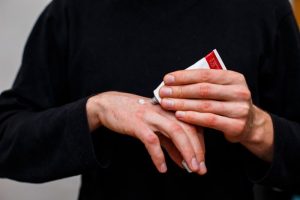
How To Treat Dry Eyes
Dry eyes is a condition where your eyes are not producing enough tears and/or the tears you do have evaporate too quickly. Dry eyes is either a temporary condition or a chronic (long lasting and doesn’t go away on its own) condition.
Related Topics (Sponsored Ads):
Temporary dry eyes is usually caused by something in your environment, such as too much dust or smoke, problems with prescription lenses, bad lighting, etc. If the problematic cause is removed, then temporary dry eyes will get much better or even disappear. Chronic dry eyes however, is caused by an underlying medical condition(s). These can include health conditions of the eye glands, skin diseases near the eyes, and allergies. There are several different treatment options available.

Medications
– Artificial Tears: These are special eye drops available over the counter. Frequent use of these can greatly lessen symptoms in light to moderate cases.
– Prescription anti-inflammatory antibiotics: Usually prescribed if your doctor believes your dry eyes is caused primarily by inflammation of the eye lids.
– Special prescription eyedrops: Such as Cyclosporine and Lifitegrast (Xiidra).
– Eye inserts: These small clear tubes of medication look like grains of rice and go into your eye. They release medicine throughout the day to keep your eyes moist.
Medical Procedures
– Closing the tear ducts: Partially or completely plugging your tear ducts. The tears will stay in your eyes longer if there is nowhere for them to drain. These plugs are made of silicone and are removable.
– Special contacts: These special contacts are designed to protect the surface of your eye and prevent moisture from escaping.
– Clearing blocked oil glands: This outpatient medical procedure applies heat to your eyelids to clear blocked oil glands.
Natural Treatments
– Regular application of a warm compress with a clean, wet cloth on each eye for five minutes at a time.
– Regular cleaning of your outer eye lids and eyelashes using over the counter specialized eye cleansing pads.
– Adding anti-inflammatory food or supplements to your diet, such as Omega-3.
– Using castor oil eye drops.
Environmental and Behavioral Changes
– Don’t keep reading a computer screen or device for many hours at a time – take frequent “eye breaks”.
– Stay out of smoky, dusty or very dry environments.
– Don’t have constant air (from a fan or air conditioner) blowing on your face.
– Get and use properly prescribed correction lenses, especially for time spent on a computer.




